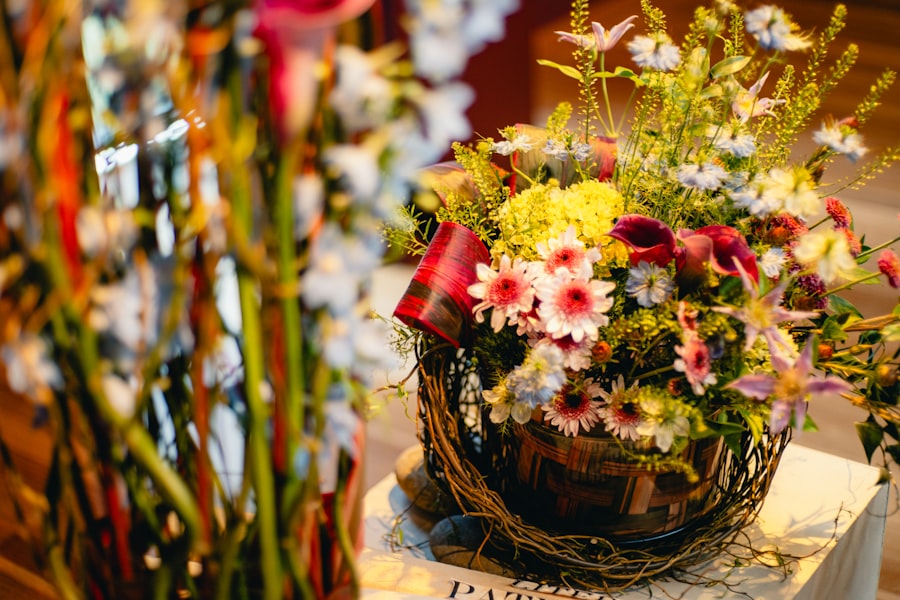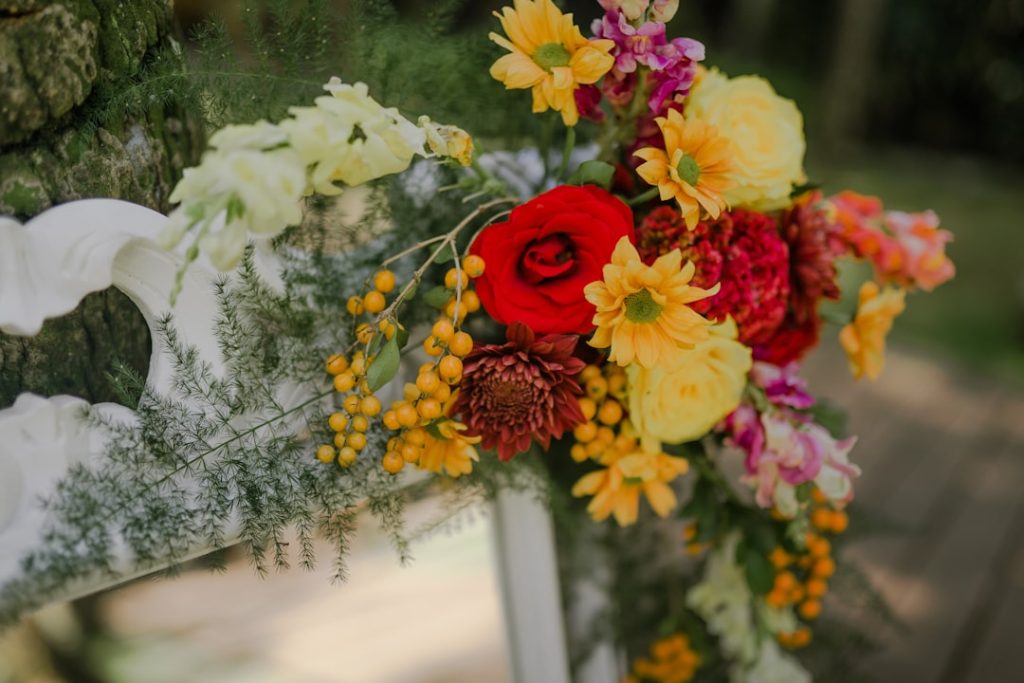As we embark on our journey into the world of floral arrangements, it is essential to grasp the concept of seasonal availability. Flowers, much like fruits and vegetables, have their own growing seasons, which can significantly influence their quality, price, and overall aesthetic appeal. By understanding when specific flowers bloom, we can make informed choices that not only enhance our floral designs but also align with our budget and environmental considerations.
In many regions, spring heralds the arrival of vibrant blooms such as tulips, daffodils, and peonies, while summer showcases a plethora of options like sunflowers, dahlias, and zinnias. Autumn brings forth rich hues with chrysanthemums and asters, and winter offers a more limited selection, often featuring hardy varieties like poinsettias and evergreens. By familiarizing ourselves with these seasonal patterns, we can ensure that our floral choices are not only beautiful but also sustainable and cost-effective.
Key Takeaways
- Flowers have different availability throughout the year, so understanding the seasonal availability is crucial for selecting the right blooms for your wedding.
- Selecting the right flowers for each season ensures that your wedding décor is in harmony with the natural surroundings and creates a cohesive look.
- Creating a color palette based on seasonal blooms helps in achieving a cohesive and visually appealing wedding theme.
- Incorporating seasonal flowers into your wedding theme adds a touch of freshness and elegance to the overall ambiance.
- Choosing the right floral arrangements for each season ensures that the flowers are at their peak and look their best on your wedding day.
Selecting the right flowers for each season
When it comes to selecting flowers for each season, we must consider not only their availability but also their symbolic meanings and aesthetic qualities. In spring, for instance, we might gravitate towards flowers that embody renewal and growth. The delicate petals of cherry blossoms or the cheerful faces of daffodils can evoke feelings of joy and optimism, making them perfect for celebrations like weddings or graduations.
As summer rolls in, we can embrace the bold and vibrant colors that this season offers. Flowers such as hydrangeas and roses can add a touch of romance to any arrangement, while wildflowers can bring a sense of whimsy and natural beauty. In autumn, we might lean towards deeper shades of red, orange, and gold, with flowers like marigolds and dahlias reflecting the changing leaves.
Finally, in winter, we can opt for elegant arrangements featuring evergreens and seasonal blooms like amaryllis or hellebores, which can create a warm and inviting atmosphere even in the coldest months.
Creating a color palette based on seasonal blooms

Once we have selected our seasonal flowers, the next step is to create a cohesive color palette that reflects the essence of the season. Color plays a crucial role in setting the mood for any event, and by thoughtfully combining hues from our chosen blooms, we can craft an atmosphere that resonates with our vision. In spring, we might choose soft pastels like blush pinks, light yellows, and gentle greens to evoke a sense of freshness and renewal.
These colors can be beautifully complemented by white or cream flowers, creating an ethereal look that is perfect for outdoor weddings or garden parties. As summer approaches, we can embrace bolder colors such as vibrant reds, sunny yellows, and deep purples that reflect the energy of the season. Mixing these bright shades with lush greenery can create a lively and dynamic arrangement.
Autumn invites us to explore rich jewel tones like burgundy, burnt orange, and mustard yellow. These colors can be paired with earthy elements such as brown or gold accents to create a warm and inviting atmosphere. In winter, we might opt for a more subdued palette featuring deep greens, whites, and pops of red or gold to evoke a sense of elegance and festivity.
By carefully curating our color palette based on seasonal blooms, we can ensure that our floral arrangements harmonize beautifully with the overall theme of our event.
Incorporating seasonal flowers into your wedding theme
Incorporating seasonal flowers into our wedding theme allows us to create a cohesive and memorable experience for ourselves and our guests. By aligning our floral choices with the overall aesthetic of our wedding, we can enhance the ambiance and make a lasting impression. For instance, if we are planning a rustic-themed wedding in the fall, we might choose wildflowers and foliage that reflect the natural beauty of the season.
We can use seasonal blooms in various aspects of our wedding décor, from bouquets to centerpieces to ceremony backdrops. A bride carrying a bouquet of peonies and sweet peas in spring can evoke a sense of romance and freshness, while a groom’s boutonniere featuring seasonal herbs can add a unique touch. For table centerpieces, we might opt for arrangements that incorporate seasonal fruits alongside flowers to create a visually stunning display that celebrates the harvest season.
Moreover, incorporating seasonal flowers into our wedding theme allows us to tell a story through our floral choices. Each bloom can represent a different aspect of our relationship or symbolize important moments in our journey together. By thoughtfully selecting flowers that resonate with us personally while also reflecting the beauty of the season, we can create an unforgettable experience that is uniquely ours.
Choosing the right floral arrangements for each season
Choosing the right floral arrangements for each season involves considering not only the types of flowers available but also their size, shape, and style. In spring, we might favor loose and airy arrangements that reflect the lightness of the season. Delicate blooms like lilacs or ranunculus can be arranged in soft cascading styles that evoke a sense of movement and grace.
As summer arrives, we may want to embrace bolder arrangements that feature larger blooms such as sunflowers or dahlias. These flowers can be arranged in more structured designs that showcase their vibrant colors and textures. In autumn, we might opt for more compact arrangements that incorporate seasonal foliage alongside flowers like chrysanthemums or zinnias to create a rich tapestry of color.
In winter, floral arrangements may take on a more minimalist approach, focusing on fewer blooms but incorporating interesting textures through elements like pinecones or berries. By choosing arrangements that align with the characteristics of each season, we can create stunning displays that capture the essence of nature’s beauty throughout the year.
Working with a florist to bring your vision to life

Collaborating with a florist is an essential step in bringing our floral vision to life. A skilled florist not only possesses knowledge about seasonal flowers but also has an eye for design that can elevate our ideas into stunning realities. When working with a florist, it is important for us to communicate our preferences clearly while remaining open to their expertise.
We should come prepared with inspiration images or mood boards that reflect our desired aesthetic. This visual reference can help guide our florist in understanding our vision while allowing them to suggest complementary flowers or arrangements that we may not have considered. Additionally, discussing our budget upfront will enable our florist to tailor their recommendations accordingly without compromising on quality.
Throughout the planning process, maintaining open lines of communication with our florist is crucial. Regular check-ins can help ensure that we are on the same page regarding timelines, delivery details, and any last-minute adjustments that may arise. By fostering a collaborative relationship with our florist, we can create beautiful floral designs that truly reflect our style and vision.
Using non-floral elements to complement seasonal flowers
While flowers are undoubtedly the stars of any arrangement, incorporating non-floral elements can enhance their beauty and add depth to our designs. Seasonal foliage such as eucalyptus or ferns can provide texture and contrast while also grounding the arrangement in nature. Additionally, incorporating fruits or vegetables into our designs can create visual interest while celebrating the bounty of each season.
For example, during autumn weddings, we might consider adding small pumpkins or gourds alongside our floral arrangements to evoke a cozy harvest feel. In springtime events, incorporating branches adorned with blossoms or even twigs can add height and dimension to centerpieces while emphasizing the freshness of the season. Moreover, using decorative elements such as candles or lanterns can create an inviting atmosphere when paired with seasonal flowers.
The warm glow from candlelight can enhance the colors of our blooms while adding an element of romance to evening events. By thoughtfully integrating non-floral elements into our designs, we can create stunning arrangements that are both visually captivating and meaningful.
Tips for budget-friendly seasonal flower décor
Creating beautiful floral décor on a budget is entirely achievable when we focus on seasonal blooms and smart design choices. One effective strategy is to prioritize local flowers that are in season; these tend to be more affordable due to lower transportation costs and higher availability. By sourcing flowers from local farmers’ markets or flower shops specializing in seasonal offerings, we can save money while supporting local businesses.
Another budget-friendly tip is to consider using fewer flowers but opting for larger blooms or statement pieces that make an impact without overwhelming costs. For instance, using a few large sunflowers as focal points in centerpieces surrounded by greenery can create an eye-catching display without requiring an extensive array of smaller blooms. Additionally, DIY floral arrangements can be a fun way to save money while adding a personal touch to our décor.
We might gather friends or family for a flower-arranging party where we can create bouquets or centerpieces together using seasonal blooms purchased at wholesale prices. This not only helps us stay within budget but also creates cherished memories leading up to our special day. By embracing these budget-friendly strategies while focusing on seasonal flowers, we can achieve stunning floral décor that enhances our event without breaking the bank.
Ultimately, it is about celebrating the beauty of nature while creating an unforgettable experience for ourselves and our guests.
